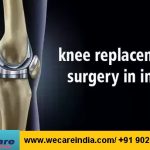RADIOFREQUENCY OCCLUSION SURGERY
Radiofrequency Occlusion is an alternative to surgical stripping of certain underlying veins that are the source of surface varicose veins and venous insufficiency. Radiofrequency occlusion presents a valid alternative to traditional methods of varicose vein surgery, ligation and stripping. This patented technique known as the Closure Procedure directly heats the inner lining of the diseased vein using a radiofrequency (RF) catheter instead of a laser filament.
Radiofrequency occlusion is a minimally invasive procedure which can be performed in the physician’s office or an ambulatory surgery setting with local anesthesia and some intravenous sedation. After the area has been cleaned, local anesthetic is injected into the distal area of the vein to be treated. A small tube or catheter is threaded along the vein under direct ultrasound guidance injecting local anesthetic along the way for patient comfort. When the entire vein to be treated has been canalized, sound waves are used to heat and collapse the vein beginning from the top down. The collapsed vein results in a thin scar which is eventually absorbed by the body.
What are the benefits of radiofrequency occlusion over other similar treatments?
The advantages of radiofrequency occlusion in the treatment of varicose veins are numerous. Traditionally varicose veins have been treated with surgical vein stripping requiring a general anesthetic. Radiofrequency occlusion requires less anesthesia and the patients are ambulatory within a short period of time following surgery. This decreases the risk of blood clots that can occur as a result of immobilization. The decreased requirement for anesthesia with radiofrequency occlusion also allows the physician to perform this procedure in the office or an outpatient center. With no incisions involved, healing occurs at a faster rate, allowing for return to work in a shorter period of time.
What are the possible complications or side effects of radiofrequency occlusion?
The cosmetic and functional results of radiofrequency occlusion are comparable to or even better than surgical vein stripping. However, as with any medical procedure, complications can occur. The chance of bleeding, infection or blood clots exists with radiofrequency occlusion just as with other procedures. Immediate and long term results are improved due to the lack of incisions and trauma from this minimally invasive procedure compared to traditional surgery. One unique complication with radiofrequency ablation is the small chance of a skin burn due to the method of occlusion. In experienced surgical hands these complications are rare.
Who is a candidate for radiofrequency occlusion?
People who are candidates for radiofrequency occlusion procedures include those who have dilatation of the great saphenous vein or other large veins in the legs creating venous insufficiency. This condition is diagnosed by a specialist using a test called duplex ultrasound. It is important to see a physician who specializes in the treatment of varicose veins to determine if radiofrequency occlusion is the best procedure.
Radiofrequency Occlusion is similar to endovenous laser treatment as alternative to traditional surgical excision or “stripping” of specific underlying veins that are the source of varicose veins and venous insufficiency. This patented technique known as the Closure Procedure® (VNUS, San Jose, CA) directly heats the inner lining of the diseased vein using a radiofrequency (RF) catheter instead of a laser filament. The decision to use a radiofrequency versus a laser catheter in treating superficial venous insufficiency depends on the leg vein anatomy and the caliber of the vein to be treated.
During this technique a thin radiofrequency catheter is inserted into the damaged underlying vein with incompetent valves. The catheter is then advanced under duplex ultrasound guidance to the upper end of the abnormal vein. Local anesthesia is then delivered to the entire vein and the radiofrequency catheter is then opened so that the “prongs” contact the inner surface of the vein wall. The RF catheter is then slowly withdrawn back through the vein while delivering RF energy along the entire length of the abnormal vessel. This heats the vein causing it to contract, fibrose and eventually completely close.














